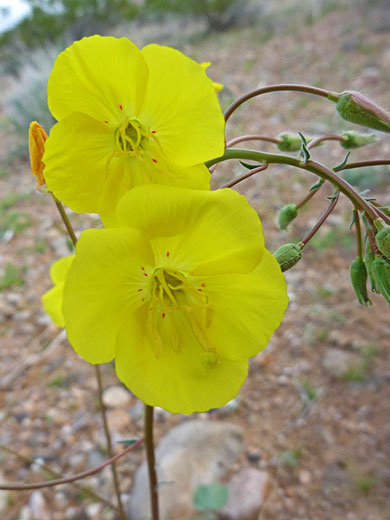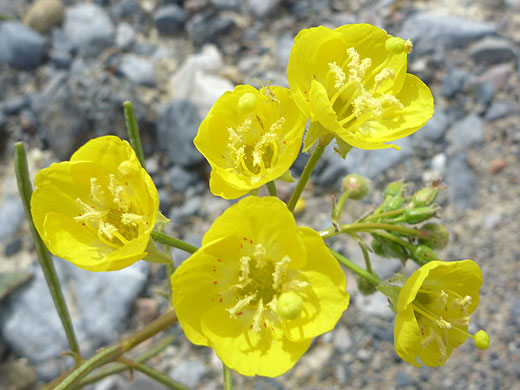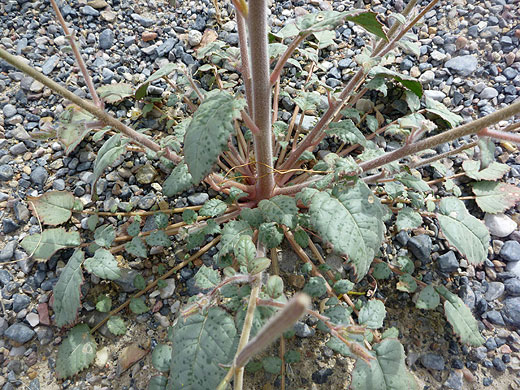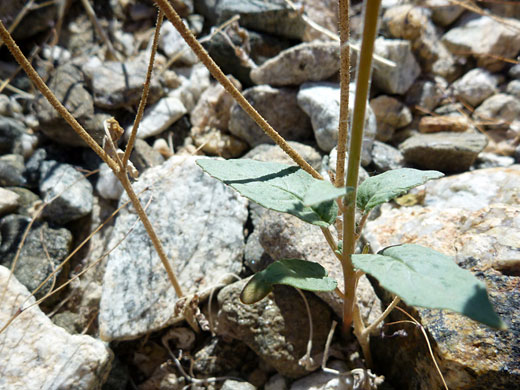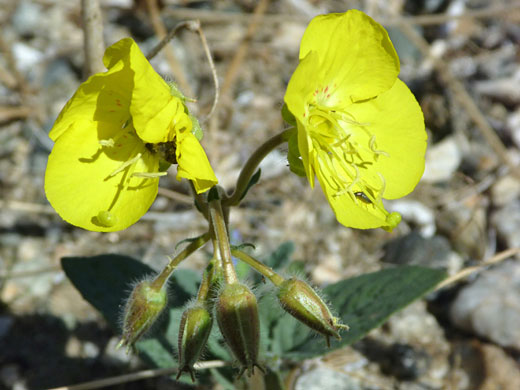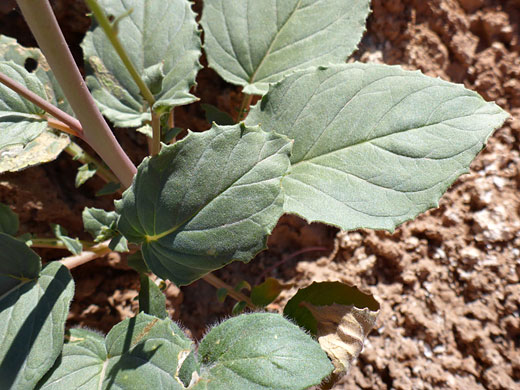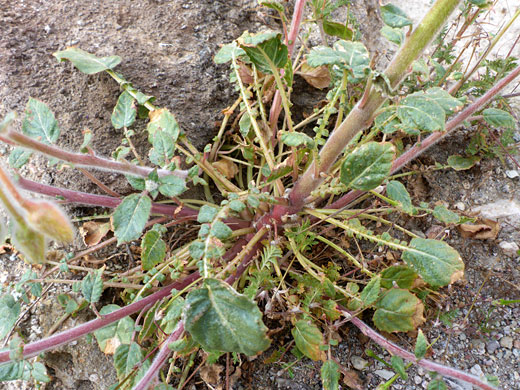Common names:
Yellow cups, golden suncup, Mojave suncup, desert primrose
Family:
Scientific name:
Camissonia brevipes
Synonym:
Chylismia brevipes
Main flower color:
Range:
The Mojave, Sonoran and southern Great Basin deserts (AZ, CA, NV, UT)
Height:
Up to 25 inches
Habitat:
Deserts; sandy or rocky slopes, along dry washes
Leaves:
Up to 5 inches long, grey-green, (usually) pinnately lobed, growing at or near the base
Season:
March to May
The inflorescence of camissonia brevipes is a spike (raceme) with several dozen individual flowers on short, hairy stalks (petioles), often drooping downwards. Flower heads have four round, yellow petals, eight yellow stamens with large anthers and one yellow pistil, which terminates in a spherical structure. Petals usually have a few small red spots towards the base. Withered petals tend to become orange then red. Flower stems are red-brown in color, and usually leafless; the divided leaves grow only round the base. Buds and stems usually have a covering of fine hairs, though sometimes the stems are hairless. There are three varieties of camissonia brevipes (arizonica, brevipes and pallidula), differing in aspects of flower structure and petal color.
Although a member of the evening primrose family, this species blooms in the morning rather than late in the day. It is a common sight in desert regions of the Southwest, from Nevada to Arizona.
Although a member of the evening primrose family, this species blooms in the morning rather than late in the day. It is a common sight in desert regions of the Southwest, from Nevada to Arizona.
All Contents © Copyright The American Southwest | Comments and Questions | Contribute | Site Map



